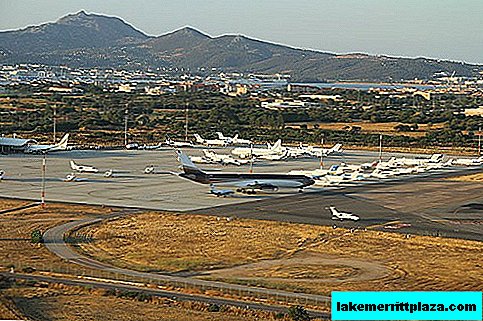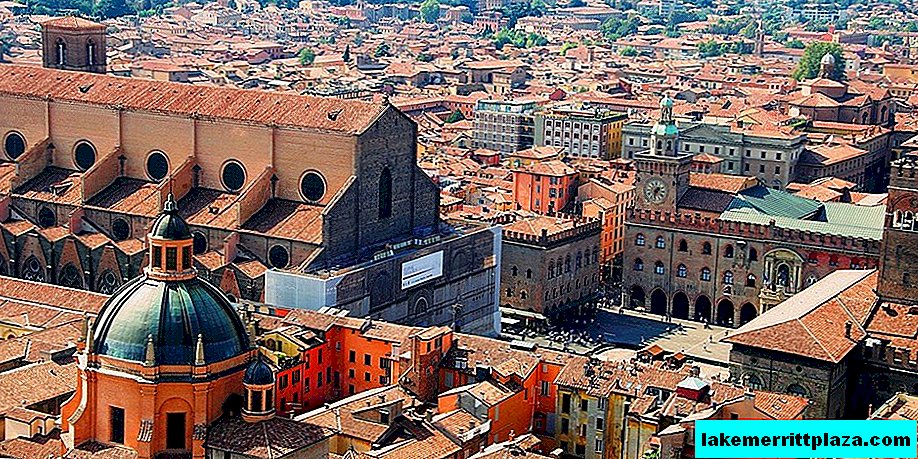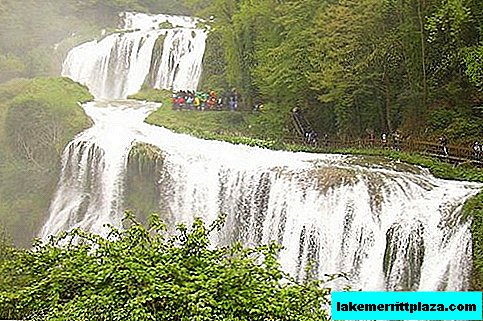Giorgio Vasari is a renowned artist, architect, and Renaissance writer. This amazing person, gifted with various talents and great industriousness, managed to make a significant contribution to Italian and world art. Thanks to his literary works, descendants became aware of interesting biographical facts that describe the life and career of many eminent contemporaries of the master.
Biography
Giorgio Vasari was a native of Arezzo, one of the oldest cities in Tuscany. He was born in 1511, in a large family of a simple artisan engaged in pottery. At an early age he showed a penchant for creativity, and already a 12-year-old teenager he studied decorative art with the French artist Guillaume de Marcillat, who arrived in Arezzo for painting frescoes and stained glass windows of the cathedral.
In 1524, Vasari was in Florence, where he met his future teacher, painter Andrea del Sarto (Andrea del Sarto). There he met Michelangelo, who later became not only a mentor to him, but also a friend. While in the capital of the Florentine Republic, the young artist received the patronage of representatives of the influential Medici clan. Soon, due to the changing political situation, Vasari was forced to return to his hometown, where he, after the death of his father, had to support his brothers and sisters.
Exceptional ability to work was inherent in him, he traveled a lot, moved from one city to another in search of work. However, Vasari was lucky, he was able to win over influential people and gain their favor, which largely contributed to professional growth. Very soon, the young artist and architect gained great popularity among his contemporaries and began to receive numerous invitations. He lived and worked tirelessly in Pisa, Rome, Florence and Bologna.
Giorgio Vasari managed to get rich, achieve a high social status and respect for his compatriots, and received the title of nobleman. Much was done by him in the field of art education: the master, already wise by experience, was engaged in teaching for many years, and in 1561, with the financial support of the Grand Duke of Tuscany, Cosimo I de Medici became one of the founders of the Florentine Academy of Fine Arts (Accademia di belle arti di Firenze).
Architect
Not all Vasari architectural creations can be called successful. So, in particular, in working on monumental objects, the master did not always succeed in maintaining the unity of style and forms, but in the decoration of buildings a great talent and unique emphasis were felt.
Several architectural works have been preserved, designed by Vasari, distinguished by their special beauty and originality. The most significant include:
Villa Julia
Villa Giulia is an architectural complex erected in Rome for Pope Julius III. Construction began in 1550, and was completed five years later.

The ambitious project, co-authored by such famous masters as Giacomo da Vignola (Vignola), Bartolomeo Ammanati (Bartolomeo Ammannati) and Michelangelo, was a magnificent palace, consisting of three ensembles. Unfortunately, not all buildings survived in their original form. Since 1889, the National Museum of Etruscan Art (Museo Nazionale Etrusco di Villa Giulia) has been located within the walls of the villa.
Knight's Square
Knights Square (Piazza dei Cavalieri) in Pisa and the Palace of the Knights Warrant of St. Stephen, rebuilt from a complex of several buildings. Work was carried out in 1558 by order of the Duke of Tuscany, Cosimo I of Medici.
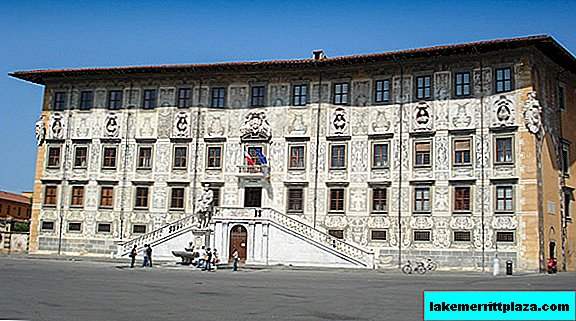
The facade is decorated in the traditional medieval technique of graffito (graffito) with ornate relief patterns, allegorical figures, zodiac signs, inscriptions, as well as marble busts of noble citizens and family emblems established later. The palace is called the Palazzo della Carovana, today the walls of the magnificent building housed the training and administrative base of the Italian State Center for Higher Education and Scientific Research (Scuola Normale Superiore).
Uffizi Gallery
The Uffizi Gallery (Palazzo degli Uffizi) in Florence, the construction of which began in 1560 and ended 20 years later, after the death of Vasari.
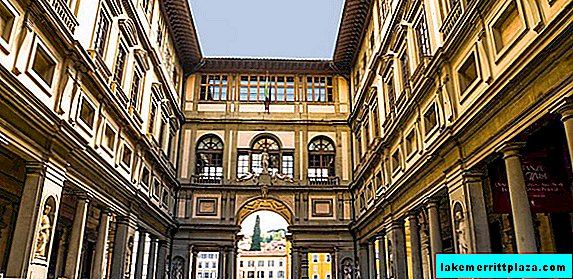
Initially, the building was supposed to play the role of the main administrative center, containing the main organs of city government, the office, the archive and the library. The first project proposed by the architect was significantly changed. As a result, the palace acquired the appearance of a structure consisting of two buildings connected by a large arcade.
Almost immediately after completion of construction, from 1581 the Uffizi building housed an art exhibition with unique exhibits, the collection of which was constantly replenished. For several centuries, the ancient museum has remained the most popular tourist attraction not only in Florence, but throughout Europe.
In general, the main features of Vasari's architectural work include adherence to strict academic canons and classical traditions.
Vasari Corridor in Florence
One of the most famous and unusual architectural creations of the master is a covered gallery connecting the buildings of the Palazzo Vecchio and the Palazzo Pitti, located on the opposite banks of the Arno River.
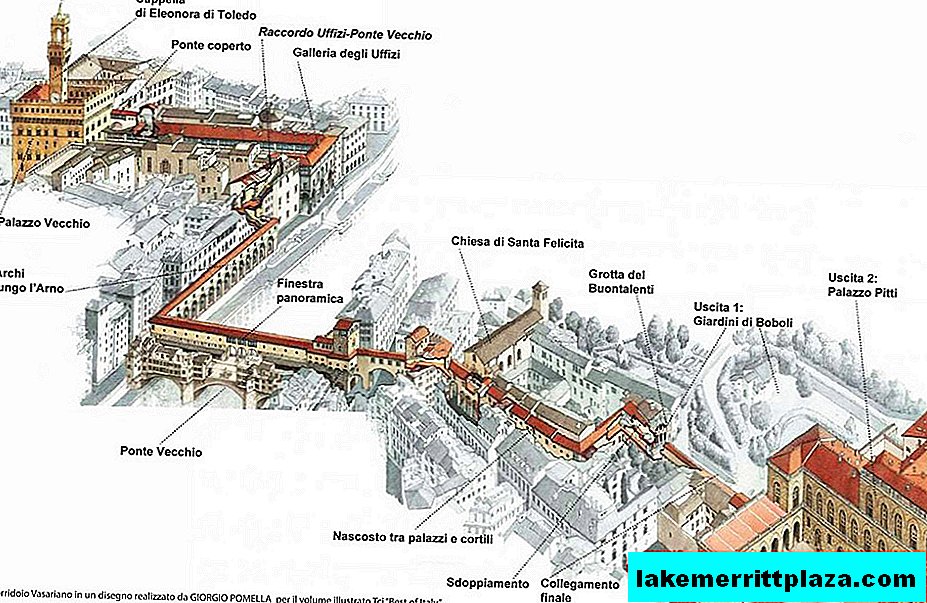
The Vasari corridor (Corridoio Vasariano) - the so-called 750-meter building, was erected in record time for that time (5 months) in 1565. The project was commissioned by Cosimo I, and was dedicated to the ceremonial conclusion of a dynastic marriage between the son of the Grand Duke of Tuscany, Francesco I de Medici, and the representative of the ancient Habsburg monarchial family, Giovanna d'Austria, the youngest daughter of the emperor Ferdinand I.
The influential Medici clan moved in 1560 to the more spacious Palazzo Pitti, located on the west bank of the Arno River. The construction of the corridor that unites the new residence with the Old Palace (Palazzo Vecchio), where the meetings of the Government of Florence took place, allowed the titled persons, without leaving the city, to quickly, and most importantly incognito, get from one building to another.
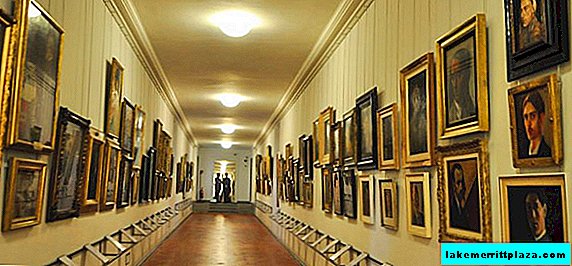
The space of the covered passage was conditionally divided into several sections. You could enter here both from the Uffizi Gallery and through the personal apartments of the Duchess Eleonora of Toledo (Eleonora di Toledo). The corridor began with a huge room called the "Hall of Five Hundreds" (Salone dei Cinquecento). The spacious hall was built during the reign of Girolamo Savonarola (Girolamo Savonarola), accommodated five hundred people's representatives of Florence and personified democratic power. Under Cosimo I, the premises were used for ceremonies and balls. On the walls and ceilings (the height of which was greatly increased by the architect) there appeared panels and frescoes made by Vasari, describing the life of the representatives of the Medici clan.
Of particular interest is the section of the passage with round dormers and metal bars, extending along the promenade to the ancient Ponte Vecchio bridge.

Despite numerous restoration work, this section of the corridor has been preserved almost in its original form.
In the exposition you can also find a picture depicting Giorgio Vasari, the brush of the master himself. Access to this section of the corridor is carried out only as part of special excursion programs by appointment.
The gallery section, passing through residential buildings and commercial premises on the bridge, is equipped with panoramic windows overlooking Florence and the Arno River. In 1939, by order of the Italian dictator Benito Mussolini, the viewing openings were enlarged. It is noteworthy that during the time of Cosimo I, the meat and fish shops located on Ponte Vecchio were replaced by jewelry stores, so that the stinking smell would not disturb the majestic persons. Pavilions that sell jewelry made of gold and precious stones, operate here today.
The gallery has a site adjacent to the ancient church of Santa Felicita. For the Grand Duke of Tuscan and his family, a window was cut down in the temple wall and an improvised balcony was built, on which one could attend the service, unnoticed by all parishioners.
The last section of the covered passage hosts an exhibition of self-portraits of contemporary artists. A large-scale restoration was carried out here in 2013. The gallery ends with access to the courtyard of the Palazzo Pitti and the Boboli Gardens (Giardino diBoboli) spread out behind the palace, representing a unique park ensemble with grottoes, fancy statues and fountains.
Today, the Vasari corridor is part of the Uffizi museum complex, and is considered one of the most interesting sights of Florence.
Painter
Giorgio Vasari considered painting his vocation, and distinguished this type of art from all the others. The cycle of frescoes created in the Palazzo Vecchio in Florence, and the wall paintings in the Sala Regia in the Vatican, depicting scenes from the life of Pope Paul III, eloquently speak of his talent as an artist.
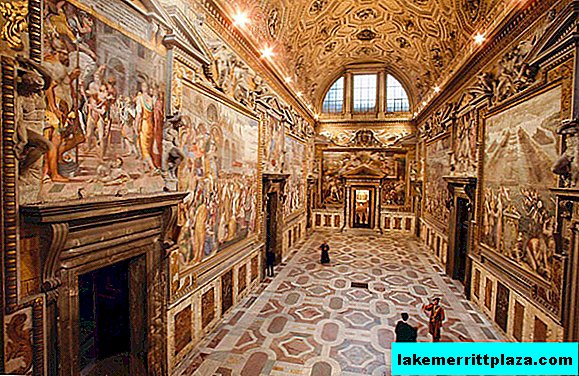
The master’s works were very much in demand, his paintings were incredibly popular among contemporaries, although in subsequent eras they were criticized and, according to some modern experts, did not pass the test of time. The artist was a follower of mannerism, the characteristic features of which include:
- Excessive spiritualism;
- Broken lines of the picture;
- Congestion of the composition;
- The pretentiousness and artificiality of the plot;
- Distorted image of figures;
- Application of vivid effects (game with dimensions, lighting and perspective);
- Use caustic color palette.
Vasari painted very quickly, due to the great industriousness of the painter, as well as the fact that when creating large-scale paintings he used the services of lesser-known young artists.
Allegory of the Immaculate Conception
Allegory of the Immaculate Conception - a magnificent work dating back to the early period of Vasari's work, was created in 1541.
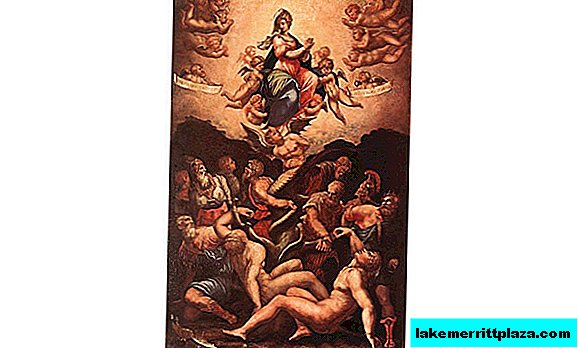
Technique - tempera, a special type of painting on a primed wooden board. The allegorical image of the Madonna, immaculate from birth, and trampling the serpent (a symbol of temptations and temptations), is known from the texts of the Apocalypse. Virgin Mary rises above the figures distorted in suffering, located at the bottom of the composition (personification of the victims of original sin). The painting is in the Florentine church of Santi Apostoli.
Annunciation
Art historians consider the date of writing the painting Annunciation 1564-1567 years.
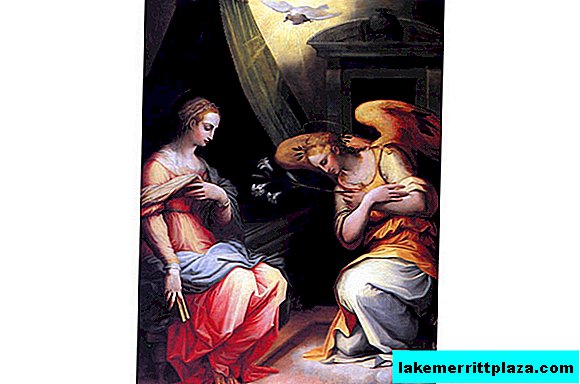
Large-scale work (216x166 cm) done in oil on wood was the first order of Cardinal Ippolito de 'Medici. The plot is based on a canonical biblical motif, which was addressed by many artists of the Renaissance: the archangel Gabriel appears before the Virgin Mary with the good news of her immaculate conception. The contrast of color, the intricacy of poses, the abundance of complex characters - all these features are so characteristic of Vasari's work. Attention is drawn to the typical surroundings of the contemporary era for the artist, against which the biblical events of centuries ago are depicted. The painting is part of the art collection of the Paris Louvre.
Self Portrait of Giorgio Vasari
Vasari's self-portrait, painted in oil, on canvas, refers approximately to the 60s of the 16th century.
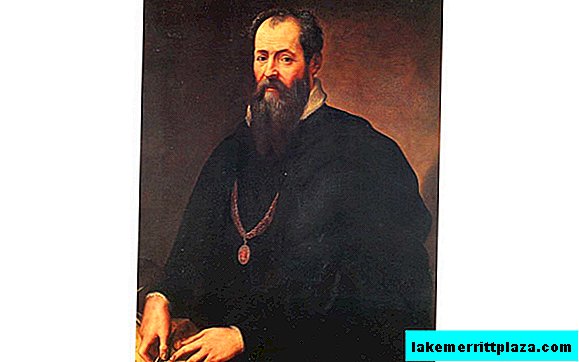
The exact date the picture was made is not known. The artist neglected such expressive means as a background or bright, draped clothes. Two bright spots attract attention: the face of a wise man with a deep, penetrating look, and his hands holding a pen and draft manuscripts. So, in a concise, simple and accessible way Vasari told about himself through a brush and paints.
Temptations of St. Jerome
The date of creation of the painting of the Temptation of St. Jerome is 1541.

Amazing oil painting on wood is part of the collection of the Palatine Gallery (Galerie Palatine), which occupies the upper floor of the Pitti Palace. Saint Jerome (Jerome) is revered by Catholics as a teacher of the Church, the creator of the canonical Latin text of the Bible, which is why he is often portrayed with a pen and scroll. Vasari chose a slightly different plot, filled with elements of eclecticism: the Christian righteous person is depicted struggling with the temptations of the flesh, the symbol of which is Wiener, the ancient Greek goddess of love.
Perseus and Andromeda
The painting of Perseus and Andromeda was created by the artist in about 1570-1572.
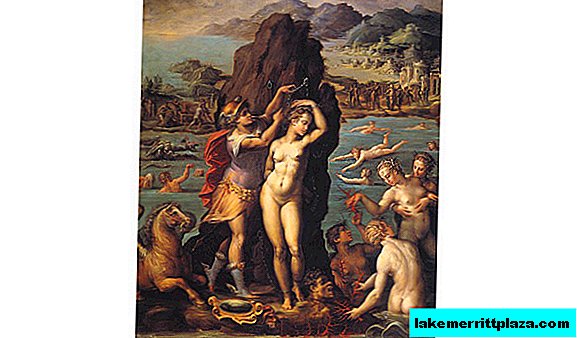
The canvas depicts a plot from ancient mythology, beloved by many Renaissance masters: the valiant Perseus frees young Andromeda, the daughter of the Ethiopian king, who was sacrificed to a terrible monster. Vasari's work is saturated with eroticism, at the same time a large number of secondary characters, an abundance of characters, a riot of bright colors and contrasts give rise to a sense of chaos and some confusion. The work of the master is stored in the museum complex of the Palazzo Pitti.
Portrait of Lorenzo di Piero de Medici (Magnificent)
The portrait of the famous ruler of Florence was painted posthumously, commissioned by his grandson, Alessandro de Lorenzo de 'Medici, in the 30s of the 16th century.
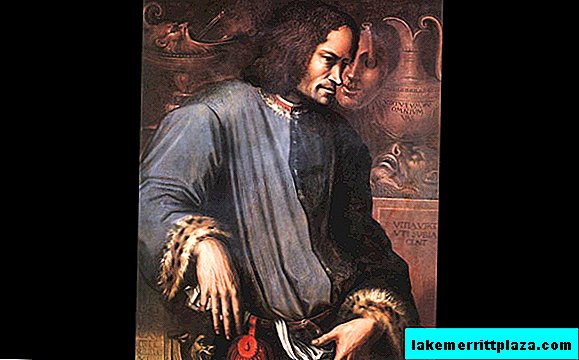
Even then, the young artist portrayed Lorenzo as a tired, haggard man, staring into the distance a sad look. The picture is saturated with quiet sadness, the image of a powerful and influential person is devoid of any pomp and importance. Only one detail hints about wealth and fame - a red wallet, which stands out as a bright spot from the general monotony of the color scheme. The famous portrait is in the Uffizi Gallery.
Biographies of the most famous painters
Despite the large number of architectural works and the fertility of the master in painting, Giorgio Vasari immortalized his name due to the fact that he became the founder of such a science as art criticism. His fundamental work, Biographies of the Most Famous Painters, Sculptors and Architects (Le Vite de'piu eccelenti Pittori, Scultori e Architetti), became for posterity the main source of knowledge about 178 great Italian artists of the Renaissance.
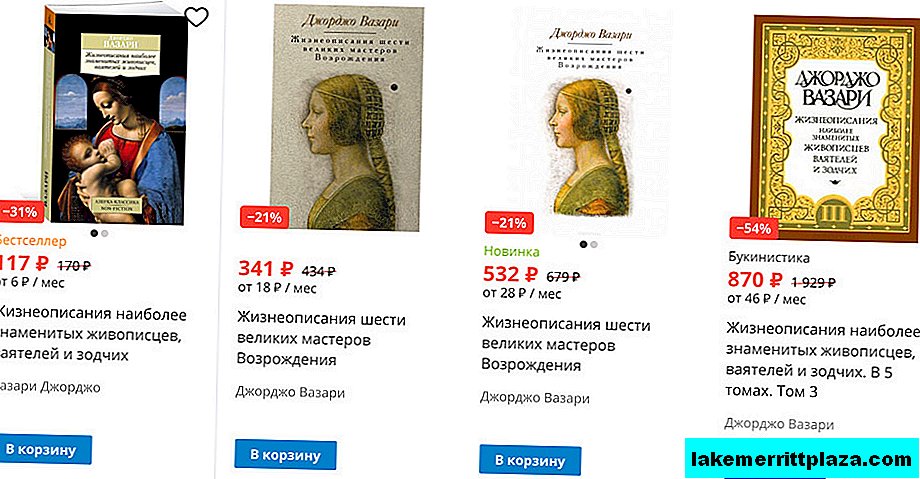
Vasari first gave a critical analysis of the works of art by masters and systematized the theoretical basis of art history. He introduced such a concept as the Renaissance, as well as Early (XIV century), Middle (XV century) and High (XVI century) Renaissance. Colossal and painstaking work was carried out to collect and process materials: autobiographies, letters, reviews and memoirs of contemporaries were used.

All biographies of artists, sculptors and architects are presented in chronological order. The gallery of historical portraits covers the period from the middle of the XIII to the middle of the XVI centuries. Some chapters are supplemented by engravings, made including by the author of the book. The information is presented in the form of entertaining short stories telling about interesting and curious biographical data of artists, their personality traits, habits, friends and enemies. Descriptions of the circumstances of life are followed by a complete list of works and their detailed art analysis. Vasari gives a thorough assessment of the style of execution, manner, techniques and features. The literary work presents the life story and a description of the creations and the author himself.
Vasari began to create his monumental literary work in about 1540-1546. The reason for this, according to the researchers, was a meeting with the historian and humanist scientist Paolo Giovio (Paolo Giovio), engaged in biographies of famous people. In 1550, the book was published, and was a huge success with contemporaries.
After another 18 years, the second edited version of the five-volume work was published, supplemented by theoretical treatises and portraits. Significant amendments to the style of narration were introduced on behalf of the author, first by the writer Annibale Caro, and then by the monk Matteo Faetani, who knew a lot about literature. In Russia, Vasari's work translated into Russian (in abridged form with biographies of 12 artists) became available to readers in 1933.


